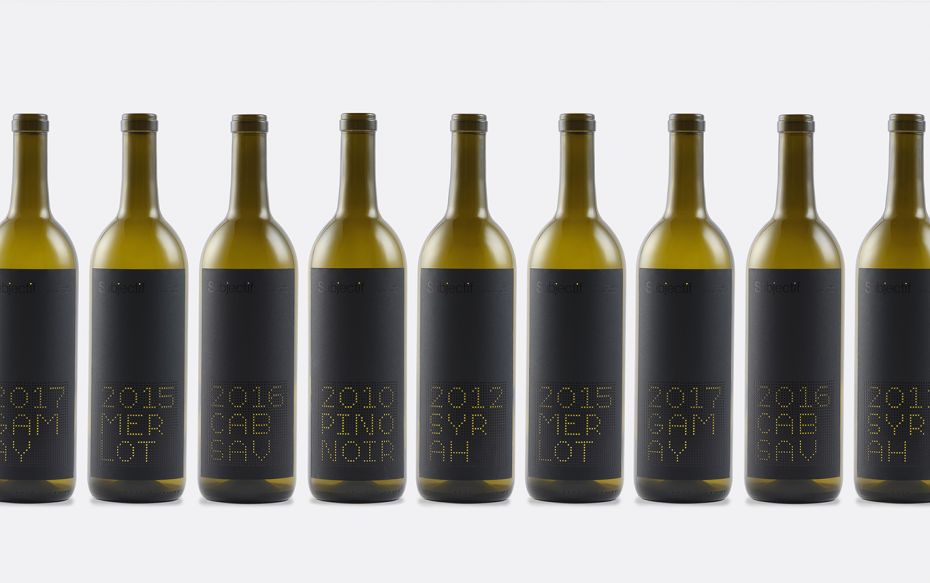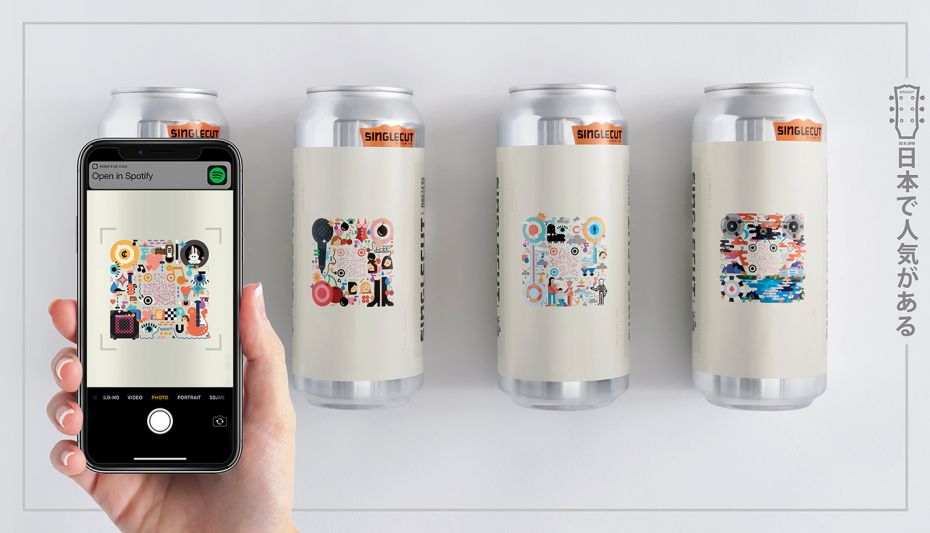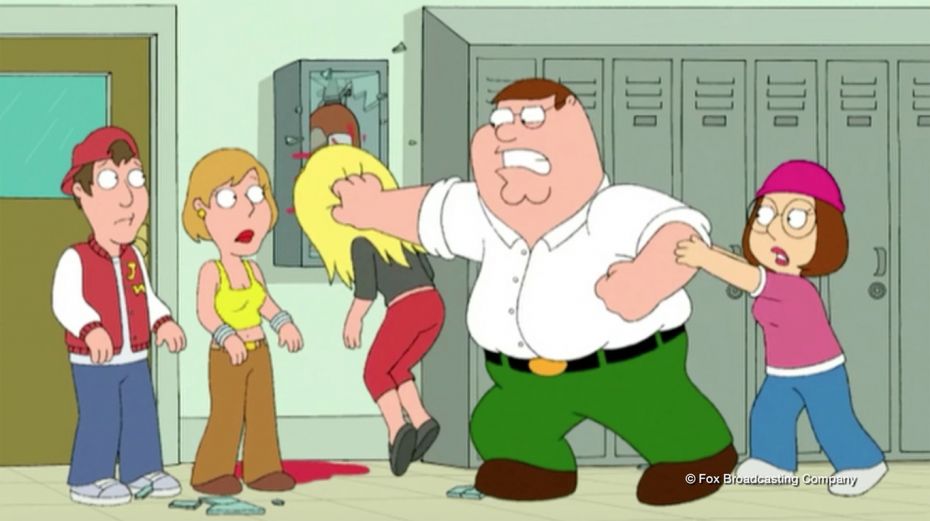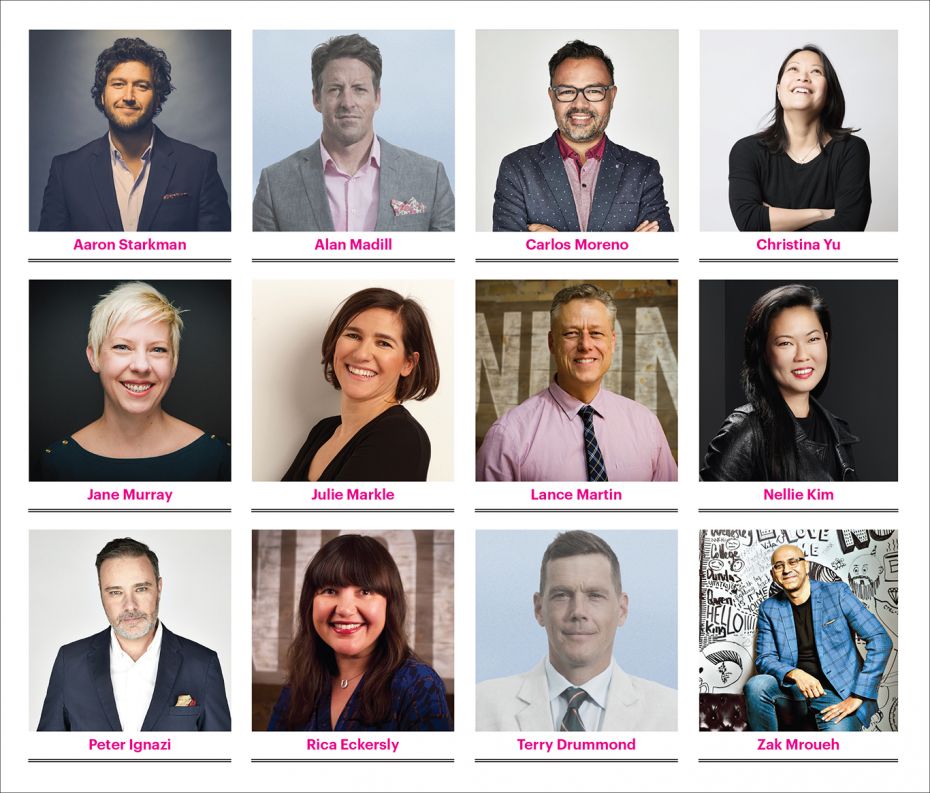SHOULDERS TO STAND ON
Today’s leaders talk about the leaders they admire and the work that inspired them
July 8, 2020
It was Winston Churchill who said, “Those who fail to learn from history are condemned to repeat it.” Churchill was of course referring to the repetition of history’s mistakes, not its better moments. Wonder what he would have said about advertising in this context?

Advertising must be one of the few occupations where the opposite is just as often true. What creative director would not want to repeat the success of the Bill Bernbach Volkswagen campaign? Or Lee Clow and Ridley Scott’s 1984 Apple SuperBowl spot? Or Nancy Vonk and Janet Kestin’s Dove campaign? And yet if you asked some of today’s younger practitioners that question, they may not know what you’re talking about.
Certainly no one outside the business is going to know these iconic moments from the history of advertising. What other occupation, with the possible exception of live theatre – puts so much effort into production artefacts that will only last for a few months? If history were water, the history of advertising would be water vapour.
For more seasoned practitioners, history is more often than not what inspired them to get into the business. When we asked 12 Canadian creative directors about what influenced them, the two names that came up most often were Bill Bernbach and Allan Kazmer, both of whose careers were at their height before some of these CDs were born. And the second most influential figures quoted by the people we spoke to? Their dads and moms. Seriously.
For each of the folks we spoke with we had three questions: what was it inspired you to get into this business, who or what was your greatest influence, and what are you most proud of? Let's get into it.
Aaron Starkman, Managing Partner, Creative Director, Rethink

‘Pour Perfectly’ campaign for Heinz Ketchup
Aaron originally wanted to be a lawyer. Then he had a chat with a lawyer friend who told him he hated his job. This sowed some doubt in Aaron’s mind. Then, he says, his girlfriend “forced me to go to a presentation at Seneca about advertising and I was hooked. That you could get paid for doing stuff that could end up on TV seemed too good to be true.”
His first job was at Y&R. He got bored pretty quick. “I spent time daydreaming about what it would be like to work at a really cool award-winning agency. After about 3 months and a bad meeting with the Ford Dealers client I was reading about a new upcoming agency in Miami. I saw ads for things like GT bikes and I was in love. The person I admired was Ari Merkin. The agency was CPB. Seven months later I was fired from Y&R. I called up Ari Merkin. He gave me the best advice I ever got. Soon after that I was hired by Zig.” He rose to CCO at Zig and then, ironically, it was purchased by CPB. What goes around comes around: suddenly Aaron was rubbing shoulders with the hero he admired so much.
His favourite recent work? The ‘Pour Perfectly’ campaign for Heinz Ketchup, wherein the package label is positioned in such a way on the bottle that it is only right-side-up when you are actually pouring the ketchup. Smart.
Alan Madill, Co-Founder, Good&Ready
Alan Madill has been in the business for 20 years, 10 of those as the co-founder of Juniper Park. When the agency was purchased by TBWA, he decided it was time to take a break. So he took a cooking course, climbed some volcanoes, visited Ireland and Nicaragua, and then decided he was bored so teamed up with his long time creative partner Terry Drummond to start an agency all over again. They called it Good&Ready.
As for how he got into the business, halfway through his first year in the fine art program at Western, he met with an exec at Leo Burnett. “She took me on a tour of the agency. I saw ads being put together and empty beer cases stacked in the corner. I asked everyone in the room where they went to school. They all said OCAD. I applied the very next day.”
His earliest creative influence? “Mr. Dress Up - Ernie Coombs,” says Madill. “As a child, I sat in front of the TV with a pad of paper, markers, glue and scissors. I spent a magical half hour with Mr. Dress-Up every day. He taught me how to take what’s inside my head and express it through art and theatrics. He was a grown man who never lost his curiosity and child-like imagination, a trait that is a very important in our business.”
As for campaigns that grabbed him? A print ad done for Fisher Price anti-slip roller skates. It was a minimal layout that showed a little boy with his arms crossed and a smug smile. The headline is “Which of these three kids is wearing Fisher Price anti-slip roller skates?”. The product benefit came through and it made me smile. It taught me that a good idea is only as strong as its execution.”
Carlos Moreno, Global Chief Creative Officer, Cossette
Carlos was 11 years old when his family left Guatemala for Canada in 1983. He went from a war-torn country where tanks and guns were a constant presence to Winnipeg, where the most dangerous thing is the temperature. His mother was into the arts and advised him to do what he was passionate about. So he wound up at OCAD studying design, “But I didn’t have the patience for it. So I went into advertising.”
Fresh out of school he got his first offer from Maclaren Advertising, but was advised by his peers that it was a big corporate machine and he wouldn’t like it. “I viewed it as a learning opportunity. And I found myself in the company of the Yankees of advertising: people like Marta Cutler, David Kelso, Mark Fitzgerald and Bill Durnan.” Campaigns like Chevy’s Like a Rock and the iconic ‘I am Canadian’ were standouts for Carlos. They lasted for years.
His own favourite work includes Sick Kids VS, Bud Light Institute and RBC’s launch of ‘ARBIE’, which “Makes the bank feel a little more human. It goes back to clients having the patience to build brands over time.”
Christina Yu, Managing Partner, Creative Director, Rethink

'Rowan's Law' campaign for concussion awareness created for Government of Ontario
Christina didn’t know anything about advertising until a high school teacher said “You have a knack for communications design.” She had always loved visual arts, furniture design, and filmmaking, so ended up at OCAD on a scholarship. After foundation she wanted to be a furniture designer so went on to the industrial design program. One day while describing a new kind of lamp, department head Lenore Richards said to her “You have a knack for communications. You should go into advertising.”
Even though she stayed in the advertising stream she took a lot of craft-based courses and hung out with designers. That‘s what attracted her to her first job at TAXI – the fact that design and advertising were so integrated while everywhere else creatives stayed in their own lanes.
You can see it in her work. The iconic campaign for Flow radio, which was later emulated by the iPod campaign for Apple, is a perfect blend of design and advertising. And you can see it in her list of creative heroes: designers Dieter Rams and Stefan Sagmeister, artist Barbara Kruger and, here he comes again, creative director Allan Kazmer.
The recent work she is most proud of is the Rowan’s Law campaign for concussion awareness. “It is a perfect combination of communication and design,” asserts Christina, “and it’s something that matters and can effect change - something that a creative person likes to do.”
Jane Murray, Creative Director-at-Large

Mini outdoor kept a lot of people at TAXI busy.
“My father was an art director at McCann Advertising,” says Jane Murray. “I have an early memory of visiting my dad’s office in the 70’s and seeing a drafting table with a giant layout pad, and a display stand of Pentel markers in every conceivable shade. I can still remember the smell of those markers! I thought that must be the most wonderful job in the world, to sit in this cool office downtown and draw all day.”
While still in grade school, Jane would pore over her father’s Applied Arts and Communication Arts magazines, cut out her favourites and pin them to the tack board in her room. In this way she became familiar with the big names. Then when she grew older and attended OCAD, she met and was taught by a few of them, most notably Allan Kazmer and Terry Iles.
One of the pieces of work that inspired her was the 1989 campaign for Black Label Beer. “It’s design-forward, fun and cheeky – which come to think of it is what I strive for in my own work.” That includes the much-referenced Mini out of home while at TAXI. “I can be on the other side of the planet and someone will say – oh, you did the Mini cage? Always a feel-good moment.”
Julie Markle, Executive Creative Director, BlueBlancRouge

Julie Markle is especially proud of this campaign, which was designed to raise funds for hospitals by promoting the importance of this kind of mother-baby contact. The tie-in to the brand name is a lovely awareness driver.
Julie art directed her first ad at age 9. It was for Pepto Bismol. This is someone who loved advertising from day one. She flirted briefly with fine art but says “I love solving problems, not making up my own.” She was brought up surrounded by artists. Her father and uncle are known in the commercial world for founding a well-known sign business in Toronto - The Brothers Markle - and are known in the art world for starting the Electric Gallery, which featured artists who worked in neon and other electric media.
Her big influences, other than her father and uncle, were the abovementioned Bill Bernbach and Allan Kazmer. In fact her first job was to work for Allan Kazmer on the Volkswagen account. Talk about a dream come true. “We worshipped him. The ultimate goal was to get your work up on Allan’s wall. The ultimate test we gave ourselves was, is this worthy of Allan?”
She also cites Nancy Vonk and Janet Kestin, especially for their Dove work. “I loved that these strong women were doing work that was upending the industry. And I ended up working with them. I spent many years at Ogilvy.”
As for her own work, she’s very proud of the Huggies ‘no baby unhugged’ campaign for Kimberley-Clark, which focused on the importance of skin-to-skin contact with infants. She has recently joined with her long time creative partner Chris Dacyshyn to launch and build BluBlancRouge’s entry into the Toronto market.
Lance Martin, ECD, Partner, UNION Creative
“I was always artistic as a child, but although I enjoyed creating art for myself, it felt a bit useless after I was done, almost wasteful. Advertising was the missing puzzle piece because you needed “art” to persuade someone, or influence them, or make them take action. For me, the exciting part is connecting what a brand wants to say with something a consumer wants to hear.”
Among the work that he finds most inspiring is the long-running Got Milk campaign by Goodby Silverstein and the Fox Sports campaign by Cliff Freeman. As for who influenced him the most, he cites Paul Lavoie. “I was inspired and motivated by his unstoppable work ethic and his tireless efforts to promote the company. Creatively, he had an amazing ability to inspire you to try new things, break old clichés and to think BIG. When Paul left your office you felt unstoppable and ready to change the world.”
He is most proud of the Viagra Bleep campaign. “Due to Canadian pharmaceutical rules we were not even permitted to imply what the medication did. It was an incredibly small box to work in. We decided to use this difficult problem as the solution.” The campaign was hugely successful not only in award shows but was spoofed in pop culture and talked about by men in focus groups for many years after.
Nellie Kim, Partner, VP, ECD, Lg2

A clever way to get people to try a wine without any clue what it is before they drink the liquid inside. This ‘unbiased’ tasting trick and its ingenious use of diecut letters that reveal the contents only after they have been consumed earned Kim a Cannes Bronze Lion.
Nellie Kim is another one of those people surrounded by art growing up. Her mother was an artist. Her great uncle was renowned typographer Jungho Choi, creator of Korea’s official typeface. Along with a high school art teacher who introduced her to the world of commercial art, it was her uncle’s career and revered status in Korea that inspired her to enter OCAD.
An internship at FCB was followed by a stint at Grip and then 10 years at john st. Recent work she’s most proud of? Subjectif Wine, for 13th Street Winery in St. Catharines, which recently won a Bronze Lion at Cannes. The label is as minimal as it gets, keeping you guessing about the contents until you actually drink it. The typography is die cut and layered so that it is only legible after the bottle is empty and light can shine through it.
Aside from her mother and her great uncle, Nellie claims she has no creative heroes. She’s keeping it in the family.
Peter Ignazi, Global Chief Creative Officer, Cossette

Winner of a Cannes Gold Lion for Business Effectiveness in 2017, the five-year giving campaign for Toronto’s SickKids Hospital also helped Cossette win its third consecutive Agency of the Year award. The campaign has completely changed the fundraising space in Canada.
Peter started out in life as a research chemist for Dow chemical in Germany. And he hated it. So he went to McGill to study business and took a marketing course. Got himself an interview at Ogilvy and was hired as an account executive. “I hated that too. I was horrible at it. They gave me three months’ probation to figure it out so what did I do? Took a week off to go to Florida. That got me fired.”
He had a chat with Heather Fraser, formerly of Ogilvy and then a partner at TAXI. Her advice? Follow your heart. Do what you love to do. He spent a year prepping his book and immersing himself in the industry literature. Then he showed his book to Paul Lavoie and was hired.
Besides Paul Lavoie, he was inspired creatively by Judy John and by his wife, who was working as a creative before him. Other influences include Mary Wells Lawrence and Susan Hoffman’s work for Nike while at Wieden+Kennedy. “The entire time I’ve been in the business W&K has been the best in the world. They never miss, they never lose their focus on creativity.”
He is most proud of the SickKids VS campaign, which has completely transformed the category of giving. Other faves include the work Cossette has done for the Bud Light Institute in the US and the Swiss Chalet TV Channel, “which shows how you can use an old medium in a new way.”
Rica Eckersley, Creative Director, UNION Creative
“I never saw advertising as a career opportunity,” says Eckersley. “It was just part of my upbringing.” Like others mentioned here, it was her dad’s fascination with advertising that seeded her career. “He was crazy about advertising. But he wasn’t in advertising. He was in mining. He was a geologist and a lawyer who loved comedy, SCTV, and ads. When we were kids he took us to watch the Cannes reel at the local theatre.”
Another big influence was Elspeth Lynn. “She came to speak at OCAD when I was at Humber. She was so cool, yet modest about the work she did. It was inspiring to see that the work everyone was talking about was being done by a woman. Special K was doing this body positivity thing way before anyone else. Elspeth Lynn became my role model.”
Her 20-year career began with an internship at ACLC, followed by stints at Lowe Roche, Juniper Park and TAXI. She worked with Lance Martin at TAXI 2 and not long after he left to go to Union Creative, he called her to join him.
One of the things she is most proud of is the LGBTQR Codes campaign. It is a rebuke of Doug Ford’s attempts to remove the word ‘homosexuality’ from the curriculum. “We created t shirts with QR codes that you could scan to get all the information that Doug Ford didn’t want you to know about homosexuality."
"It was picked up by the press and shared by teachers – who are buying those t shirts in bulk.”
Zak Mroueh, Founder, Zulu Alpha Kilo

Rock music has long been a part of SingleCut Beersmith’s brand in Japan, so ZAK built QR codes into its labels that allow customers to experience the culture. Scanning the code opens a music trivia game and “name that tune” contest. Apparently this is the first beer to gamify the drinking experience. Listed in October 2019 Forbes article “20 Fresh Examples of Customer Experience Innovation”.
Zak’s major influences? Bewitched, Bernbach, Lee Clow and his dad. For anyone too young to remember, Bewitched was an American sitcom about a beautiful witch who lived in the suburbs with her hapless ad exec husband. And you know who Bernbach and Clow were.
As a kid Zak was into art and music and film and writing. In high school he was in a band and his dad, worried that his son would pursue a career in rock and roll, asked “Have you thought about advertising?”
"Advertising combined all the things that I liked to do: storytelling, writing and music,” says Mroueh. Always attracted to individuals who do things differently, he was immediately drawn to people like Bill Bernbach and Lee Clow. Starting in the mail room at Saatchi & Saatchi, he worked his way up through stints at SMW, Chiat/Day, BBDO, McCann UK and TAXI, helping the latter win and hold its status as Agency of the Decade.
“Chiat/Day was an agency I admired the minute I got into the business. From their ground-breaking Apple work to the early Nike work. But it was their lesser known clever Porsche work that sealed the deal for me. I was so happy to finally work at the Chiat/Day Toronto office and then have one of my idols (Lee Clow) inspire us to do great work during his visits and talks.”
Recent work he is most proud of includes the Tim Horton’s campaign featuring Kenya’s only hockey team being greeted by Sidney Crosby and Single Cut Brewery’s music-themed campaign in NYC, featuring the first beer using QR codes to gamify the drinking experience.
Terry Drummond, Co-Founder, Good&Ready

To fight violence against women, Good&Ready simply compiled footage from movies and TV shows that clearly demonstrate how entrenched unconscious bias actually is in our culture. We so mindlessly take it for granted that it has become a form of entertainment.
Terry’s first ambition was journalism. He interned at the Montreal Gazette and Ottawa Citizen but always liked the concept of advertising, “doing fun and wacky things and getting paid for it.”
After stints at Ogilvy Montreal and then TAXI, he founded Juniper Park with Alan Madill. But as with Alan, the TBWA purchase did not sit well. “When I left Juniper Park I knew I didn’t want a role like that anymore. The industry is not as much fun. It’s moving towards this manic headspace to do things faster and cheaper, but less thoughtfully, less joyfully.”
His creative heroes? David Bowie and Edward Hopper, the former for his ability to take his creative fire and scale it, and the latter for his aesthetic perseverance. His favourite recent work? “I’m very proud of the YWCA campaign ‘Not Okay’ which we did in 2015.” It uses footage from shows like the Family Guy and video games like Grand Theft Auto, which present extreme scenes of violence against women as entertainment. We used the footage without permission because when you step back and look at it, it makes the point better than anything.” It is a lesson in what you can do with zero dollars and a very brave client.
One of the things Terry loves most about his current remit is that they are working with entrepreneurs on a project basis. “We work directly with real businesspeople. Owners. Large corporate clients have too many layers and barriers and it wears on me. I’d rather work with someone who has skin in the game, like the folks at Pizzaiolo, for whom we recently rebranded and redesigned packaging and retail.”
By Will Novosedlik

History is the Future
We could have spoken with so many other leading figures in the field, but the patterns are clear. Leaders know whose shoulders they stand on, and are inspired by what came before them. One suspects that even had we spoken to another dozen CDs, we would have heard lots of the same names come up. And lots of parental support and inspiration to boot. In a business that produces so much that is ephemeral, it’s important to remember who created it and what made it so great, if only to avoid repeating the past’s mistakes.







